Eagles Bluff: one woman’s vision writ large in the landscape
Plantswoman Carolyn Robinson started with bare paddocks at Eagles Bluff 14 years ago - and just look at the gardens now.
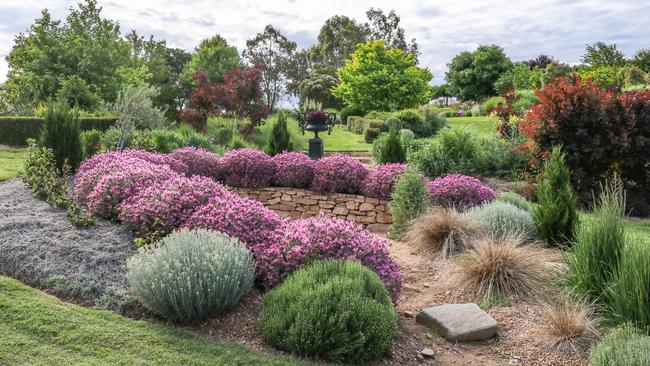
Carolyn Robinson has a rare knowledge of cool climate plants and a gift for combining them in heroic ways. The extensive garden she’s made over 14 years at Eagles Bluff, the 122ha property she and husband Peter own near Tenterfield, north-east NSW, is her second – not counting the numerous gardens she has designed for clients.
Her first was also in the high country of New England, developed over 25 years at their former property, Glenrock. That highly regarded 4ha English-style garden was once voted Australia’s best garden. Having started again with bare paddocks at Eagles Bluff, all that experience has resulted in something quite different.
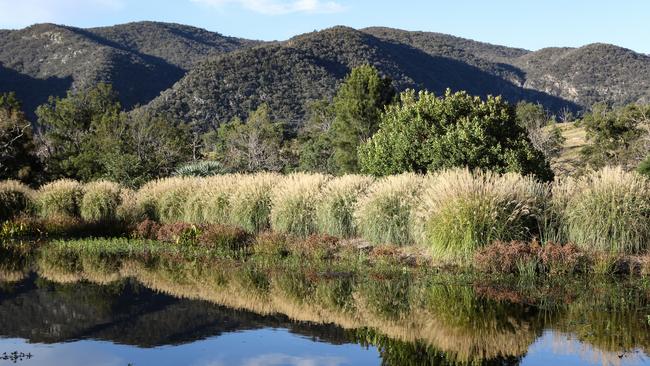
This is a truly Australian garden that connects intimately with the surrounding landscape. The rock-strewn Bluff River bounds the property for 2km, while the nearby mountain is home to wedge-tailed eagles. From the verandah of their home on a small rise above the river, the couple look out across a large, reflective pond to the Bluff River Nature Reserve, but it’s hard to tell where the 2.5ha garden begins and ends. Drystone walls and steps, built with stones from the land, create changes of level while native species blur the boundaries.
“I drew up a plan but didn’t follow it exactly,” Robinson says. “The garden has more free-flowing curves that mirror the landscape.” She happily intermingles natives with exotics. “I have in mind the plants I want to use but I always prefer the creativity of placing them on planting day. Often you get inspiration as you see the surroundings – the relationship between those trees or that hill, which you can’t discern on a plan.”
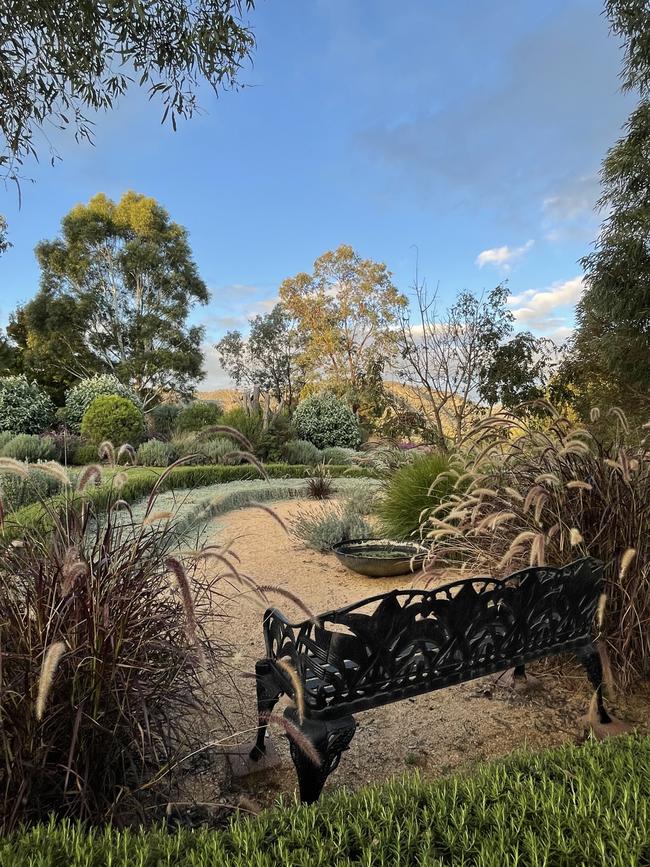
Many of the beds are more than 10m deep. “One of the keys to designing country gardens is getting the scale right,” Robinson explains. “My largest garden beds that are 14m deep are the most exciting. You need that to get the planting associations and layers to build a picture that produces depth of field. They’re also some of my lowest maintenance gardens because you can put in large shrubs such as silver-leafed Buddleia crispa, which covers a good 4sqm in a much better way than groundcovers.”
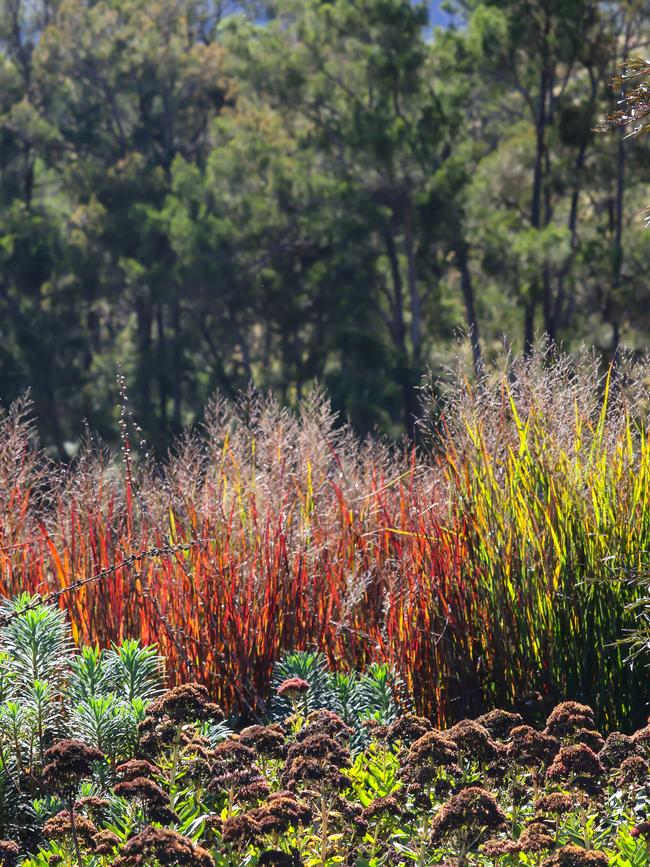
Other favourites include larger salvias, gauras, sedums, achilleas, Melianthus major and Centranthus. Ornamental grasses such as Miscanthus and Panicum play a big role for their texture and movement. “They’re so low maintenance and sustainable,” Robinson says. “All I do is cut them down at the end of winter and they form their own mulch.” She loves to contrast the flowing forms of perennials and grasses with architectural plants such as Yucca rostrata ‘Sapphire Skies’ and clipped spheres of shrubs including Euonymus japonicus and the local tea-tree Leptospermum brevipes.
She chose to avoid the tall dividing hedges of her former garden that were so much work to maintain, using only waist-high hedges of rosemary, Elaeagnus, Teucrium and dwarf Abelia that are quick and easy to prune.
Although this is granite country, at Eagles Bluff there is not enough clay in the sub-soil to build a dam, so water storage is from two 50,000-litre tanks. “The soil being beautifully drained is a boon as I don’t lose plants to wet feet,” Robinson says. “My strategy is to plant for longevity and to suit the climate into the future.”
Q&A
I planted three standard roses in a line last July. After summer pruning, one has no new growth, hasn’t flowered, and has yellowish leaves. Ideas? Andrew Williams, Melbourne
If the other two are fine and the care of all three has been equal, I’d look for curl grubs, which can be active at this time of year. They’re the larvae of beetles and eat the fine root hairs of roses and many other plants. Dig in the soil to check for them. You can drench the soil with Eco-Neem or buy beneficial nematodes that will parasitise curl grubs (see goodbugs.org.au or bugsforbugs.com.au).
The fruit on my friend’s bush lemon tree start to grow and change colour but they fall off the tree at golf ball size. Why? Brigid, Lismore, NSW
Lemons typically drop the majority of their flowers, then drop a percentage of the pea-sized fruits. A third drop can happen at golf ball size, depending on environmental factors. These include heavy rains (which your area has had) and sudden changes in temperature. Pest infestation such as mites, mealybug or scale could also be factors. The heavy rains will have leached nutrients from the soil – apply an organic-based citrus fertiliser every month or so. I’d like to plant out a bamboo that was given to me in a pot, with no label. How can I be sure it’s not an invasive type? Valerie Taylor, Mandurah, WA
You need expert identification to be certain, as clumping types are the only ones that should be planted out. Bamboo Landscape Plants at Wattleup (bamboowa.com.au) offers this and is not too far from you.
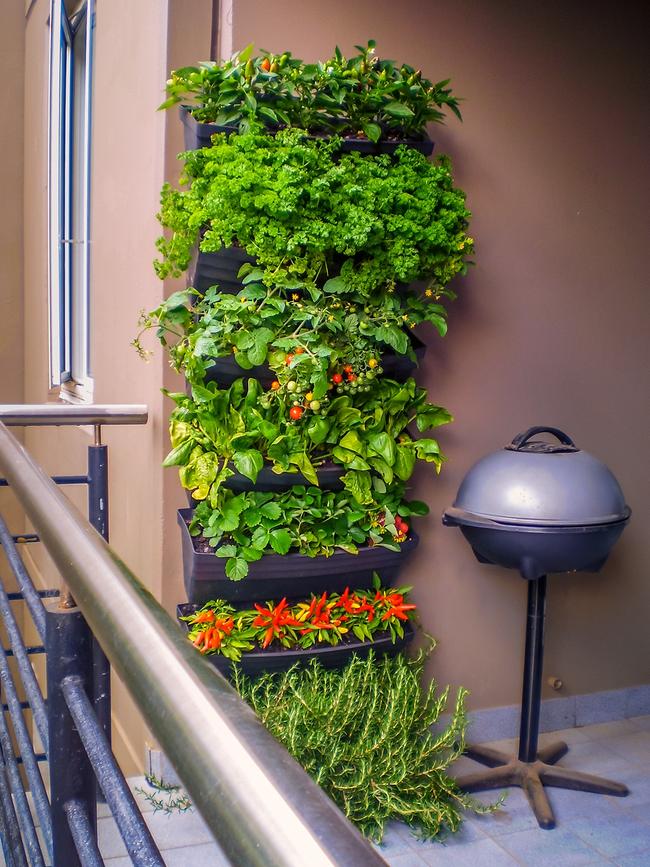
Send your questions to: helenyoungtwig@gmail.com or Helen Young, PO Box 3098, Willoughby North, NSW 2068. Website: helenyoung.com.au. The best question for May wins two boxes of 10 Wallgarden modules giving 2 sqm of planting space, worth $190. wallgarden.com.au




To join the conversation, please log in. Don't have an account? Register
Join the conversation, you are commenting as Logout